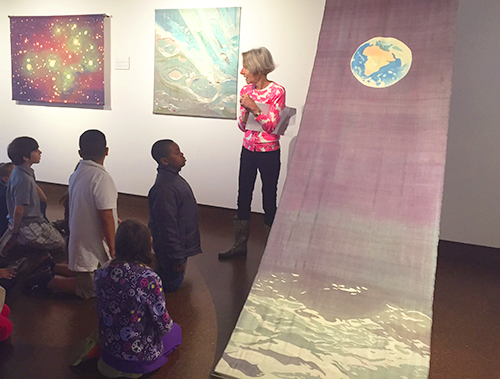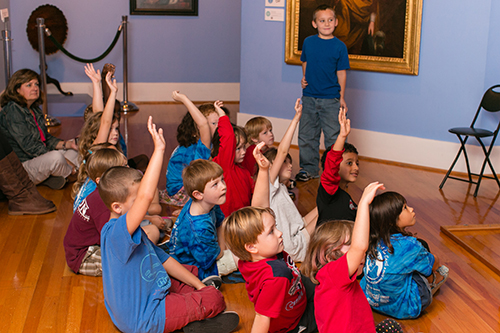
Why is art an important part of learning?
Art is an essential component of the Humanities, and visually integrates the historical, political, religious and commercial morals and values of a culture. It is one of the highest forms of expression in any given period of civilization.
While art can be whimsical, its highest forms are the result of an intellectual process. It’s multi-faceted and an artist, in creating a work of art; employs through his/her technique: logic, spatial relationships, math, science-all of which are building blocks in one’s education.
How long have you been teaching, and why did you get involved in teaching?
I was an Art History major in college and art has always been my great interest. I was a docent at the Metropolitan Museum of Art for 18 years, before moving to Charleston; and have been a docent at the Gibbes for 5 years. The combination of being educated by the curators about their fabulous collections, and in turn, imparting this knowledge to school groups, is rewarding on so many levels.
What is a favorite memory of introducing a student to the arts?
The wonderful moments, which as a museum educator that one cherishes, are when a student looks at a work of art and becomes empowered to explain what they see, why they like or dislike it, and what it means to them.

Museums are educational powerhouses. Did you know:
- Museums spend more than $2 billion a year on education. The typical museum devotes three quarters of its education budget specifically to K–12 students.
- Museums receive more than 55 million visits every year from students in school groups.
- Museums create educational programs in math, science, art, literacy, language arts, history, civics and government, economics and financial literacy, geography and social studies, often tailored to the needs of state and local curriculum standards.
- Each year, museums provide more than 18 million instructional hours for educational programs such as guided tours for students, staff visits to schools, school outreach through science vans and other traveling exhibits, and professional development for teachers.
Read the full report about museums and the future of education from the American Alliance for Museums.
To learn more about Gibbes Museum education programs, visit our Gibbes Educators Facebook page.
Published May 15, 2015

